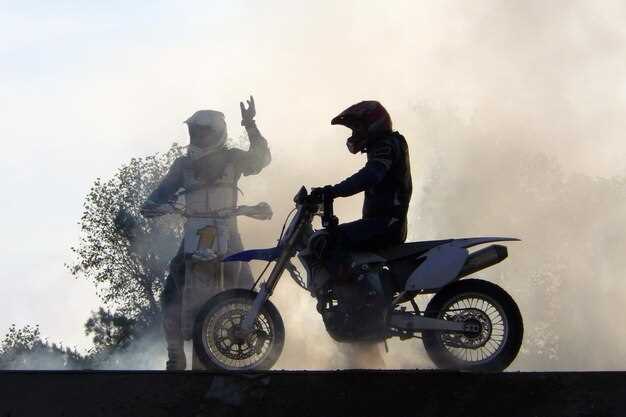

When it comes to motorcycles, two distinct categories often capture the attention of riders: street bikes and dirt bikes. Each type of motorcycle is designed with specific purposes in mind, catering to different riding experiences and environments. Understanding these key differences can help potential riders make informed decisions based on their preferences and intended use.
Street bikes are engineered for paved roads and urban environments. With their aerodynamic designs and powerful engines, they offer a smooth ride, agility in traffic, and the ability to reach high speeds. Typically, these bikes feature spoked or cast wheels and specialized tires that provide traction on asphalt, enhancing performance during commuting or long-distance travel.
On the other hand, dirt bikes are built for off-road adventures, featuring lightweight frames and suspension systems that absorb impacts from rough terrains. They come with knobby tires that offer excellent grip on dirt, mud, and gravel, making them ideal for trails and rugged landscapes. The focus on durability and maneuverability in challenging environments sets dirt bikes apart from their street counterparts.
In this article, we will delve deeper into the fundamental distinctions between street bikes and dirt bikes, examining their design, performance, and suitability for various riding styles. Whether you’re a seasoned motorcyclist or a newcomer, understanding these differences is crucial for choosing the right bike to match your riding aspirations.
Performance Features for Urban Riding

When it comes to urban riding, the performance features of a bike are crucial for navigating city streets efficiently. Street bikes are specifically engineered to excel in this environment, offering characteristics that enhance comfort and control. Their lightweight frames and responsive handling provide agility that is essential for maneuvering through traffic.
Moreover, street bikes are equipped with powerful braking systems that ensure quick stopping capabilities, vital in urban settings where sudden obstacles are common. They often feature smooth suspension systems to handle potholes and uneven surfaces, contributing to a more comfortable ride over urban terrain.
In contrast, dirt bikes prioritize off-road capabilities over urban performance. Their rugged suspension and knobby tires are designed for traction on loose surfaces, which can hinder stability on paved roads. While dirt bikes can be used in cities, they may not offer the same level of ride smoothness and control as a street bike on asphalt.
Additionally, street bikes typically come with advanced technology such as ABS (Anti-lock Braking System) and traction control, enhancing safety during city rides. These features are less common in dirt bikes, which focus on durability and performance in challenging off-road conditions.
Ultimately, for urban riding, choosing a bike that specializes in street performance ensures a safer, more enjoyable experience, allowing riders to adeptly handle the complexities of city life.
Off-Road Capabilities and Suspension Dynamics

Dirt bikes are specifically designed for off-road conditions, featuring lightweight frames and powerful engines that allow them to navigate challenging terrains. Their knobby tires provide excellent traction on loose surfaces such as sand, mud, and gravel, enhancing their ability to conquer obstacles. In contrast, street bikes prioritize smooth pavement performance, limiting their ability in off-road situations.
The suspension systems of dirt bikes play a crucial role in their off-road capabilities. Often equipped with long-travel suspension, dirt bikes absorb shocks from rough terrain, allowing riders to maintain control and stability. This type of suspension not only improves comfort during bumpy rides but also enhances safety by reducing the chances of losing traction. Street bikes, while possessing effective suspension for road use, typically lack the necessary travel and durability for off-road applications.
Overall, the design elements of dirt bikes prioritize rugged performance, enabling riders to tackle a variety of terrains confidently. The enhanced off-road capabilities and sophisticated suspension dynamics make dirt bikes the superior choice for enthusiasts seeking adventure beyond paved roads.
Maintenance Needs and Repair Considerations
When comparing street bikes and dirt bikes, maintenance needs and repair considerations are crucial factors for potential owners. Street bikes are generally designed for paved roads, leading to specific maintenance requirements that focus on components such as tires, brakes, and suspension. Due to the consistent speed and handling on smooth surfaces, street bikes may require more frequent inspection of tires for wear and proper air pressure. Additionally, brake pads are subject to wear from regular use in urban settings, necessitating periodic replacement.
In contrast, dirt bikes endure harsher conditions, often facing mud, sand, and rough terrains. This exposure results in a different approach to maintenance. Dirt bikes typically require more frequent cleaning of air filters and chains to ensure optimal performance in challenging environments. The suspension components also need regular checks due to the impact of jumps and rough trails, which can lead to quicker wear and tear.
Repair considerations further distinguish these two types of bikes. Street bike repairs tend to be more straightforward due to their simpler design and availability of parts. However, specific tools and expertise may be necessary for advanced repairs, particularly with modern bikes featuring electronic systems. On the other hand, dirt bike repairs can be more labor-intensive, often requiring detailed knowledge of specialized components and potential aftermarket upgrades for performance enhancement. Maintaining both bike types depends significantly on usage, with diligence in care and timely repairs being essential for longevity and safety.
